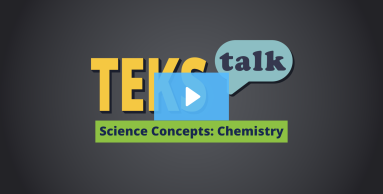- Science
- Grade 9
- Science concepts
CHEM.9.D

Knowledge and Skills Statement
Research
Edelsztein, Valeria. "An Experimental Approach with a Twist: Helping High School Students to Understand the Concept of Limiting Reactant." Journal of Chemical Education 100, no 4, (2023):1505-1510. https://doi.org/10.1021/acs.jchemed.2c00986
Summary: High school students and students in the first years of college have difficulties understanding stoichiometry and, in particular, the concept of a limiting reactant. Proposals aimed at overcoming these learning obstacles tend to focus on analogies, and few sequences approach teaching from an experimental perspective. In this article, an experimental activity was designed to introduce the concept of a limiting reactant with nonhazardous, inexpensive, and readily available materials in combination with an innovative visual and graphic representational approach.
Research
Walker, Joi Phelps, Victor Sampson, Carol O. Zimmerman, and Jonathon A. Grooms. "A Performance-Based Assessment for Limiting Reactants." Journal of Chemical Education 88, no. 9 (2011): 1243-1246. https://doi.org/10.1021/ed1006629
Summary: Educators are increasingly being called upon to provide evidence of student learning. Traditional assessments are not always the best venue for demonstrating conceptual understanding, particularly in science. This paper presents details on the design, use, and scoring of a performance-based assessment for measuring student understanding of limiting reactants. The authors encountered a variety of challenges in the process of designing the performance-based assessment; these are described as well.
